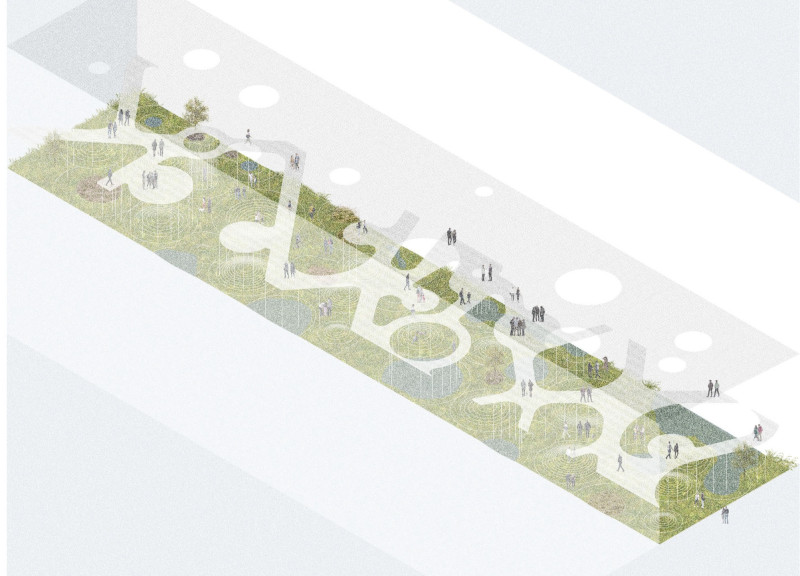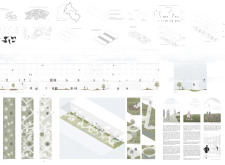5 key facts about this project
The project is strategically situated to engage with its surroundings, featuring an open ground floor that promotes accessibility and encourages social interaction. This layout allows for a seamless flow between indoor and outdoor environments, enhancing user experience and fostering a sense of community.
Functional Configuration
The thoughtful configuration of spaces is central to the project's architectural narrative. The design emphasizes fluidity through open public areas and flexible floor layouts that accommodate various activities. A series of interconnected spaces guides user movement, encouraging exploration and participation.
Key elements such as landscaped gardens and pedestrian pathways enhance usability while promoting environmental sustainability. These outdoor areas enhance urban biodiversity, providing both ecological value and recreational spaces for users.
Materiality and Sustainability
A significant aspect of the project is its commitment to sustainability through material selection. Reinforced concrete forms the structural framework, ensuring longevity and stability. Glass panels are employed to maximize natural light and foster visual connectivity with exterior environments, blurring the lines between indoor and outdoor experiences.
Wooden elements throughout the interiors add warmth and texture, enhancing the sensory experience of the spaces. Green roof systems not only contribute to the aesthetic appeal but also serve practical purposes such as insulation and stormwater management. Pervious paving materials are used in landscaping, allowing for better natural drainage and minimizing heat absorption in urban settings.
Unique Design Features
What sets this project apart is its unique approach to verticality and landscaping. Vertical elements, including canopies and greenery screens, create transitional spaces that offer shade and enhance the visual interest of the façade. This design feature not only provides comfort but also facilitates interaction among users in various contexts.
The integration of nature within the architectural framework creates a harmonious environment that is visually appealing and functionally relevant. The project prioritizes ecological considerations without compromising aesthetic values, demonstrating a balance between nature and architecture.
The innovative approach to spatial organization and material usage reflects a comprehensive understanding of user needs and environmental implications. This project serves as a model for contemporary architecture focused on creating inclusive, sustainable, and multifunctional urban spaces.
For a deeper understanding of the architectural concepts at play, consider exploring the detailed architectural plans, sections, and design ideas that illustrate the project’s comprehensive approach to modern architecture. Engaging with these elements will provide a more thorough insight into the project's design and functionality.























